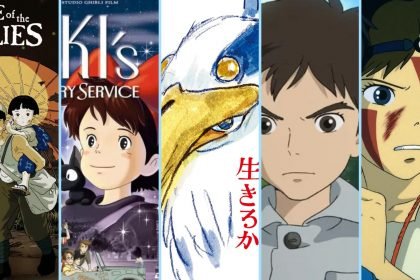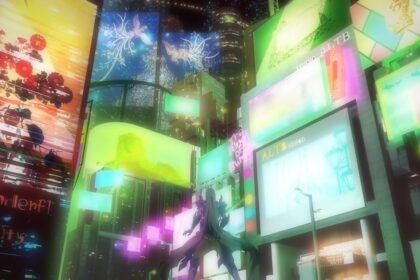Anime and manga have gained historical immense popularity worldwide, captivating audiences with their unique storytelling and vibrant visuals. While these forms of entertainment often delve into fantasy and fiction, they also draw inspiration from real-life historical events and figures. This intriguing blend of history and imagination has sparked a fascination among fans, prompting exploration into the accuracy and impact of these depictions.
Historical Accuracy in Anime and Manga
When it comes to historical accuracy, anime and manga strike a delicate balance between staying true to historical events and exercising creative freedom. In some instances, artistic liberties are taken to enhance the narrative or add dramatic flair. Popular series like “Attack on Titan” may incorporate elements of World War II, but they do so in a fictionalized setting, wherein giant humanoid creatures threaten humanity. While such adaptations may deviate from historical accuracy, they offer a fresh perspective that captivates viewers and sparks conversations about the past.
Historical Inaccuracies in “Attack on Titan”
“Attack on Titan” presents a world where remnants of humanity barricade themselves within enormous walls to protect against monstrous Titans. While the series contains elements inspired by World War II, such as military uniforms resembling those of the era, it is important to note that the story is primarily a work of fiction. The series does not attempt to provide a historically accurate account of the war. Instead, it uses elements from history to create a unique and thrilling narrative that engages audiences on an emotional level.
Historical Inaccuracies in “Samurai Champloo” Anime
“Samurai Champloo” combines samurai culture with hip-hop influences, resulting in a fusion of historical and modern elements. Although the series is set during the Edo period in Japan, it incorporates anachronistic elements such as breakdancing and graffiti. While these additions may deviate from historical accuracy, they contribute to the show’s distinctive style and appeal. By blending different eras and cultural influences, “Samurai Champloo” creates a fresh and engaging experience for viewers.
Further Readings: Portrayal of War and Conflict in Anime and Manga
Historical Anime and Manga as Educational Tools
Despite the occasional historical inaccuracies, anime and manga possess educational value, serving as accessible and engaging tools for learning about history. These mediums can ignite curiosity and encourage further exploration of historical events and figures. For instance, “Hyouge Mono” delves into the life of historical figure Sen no Rikyu, a master of the Japanese tea ceremony during the Sengoku period. The series offers an immersive experience where viewers can learn about Japanese history and cultural practices while being entertained.
The Impact of “Hyouge Mono” in Teaching Japanese History
“Hyouge Mono” provides a unique blend of historical accuracy and fictional storytelling. By delving into the intricate world of tea ceremonies and the political climate of the Sengoku period, the series offers viewers a glimpse into the complexities of Japanese history. Through its captivating characters and attention to detail, “Hyouge Mono” not only entertains but also educates, providing a gateway for viewers to explore the rich tapestry of Japan’s past.
“Barefoot Gen” and Its Depiction of Hiroshima Bombing
“Barefoot Gen” is a manga series that depicts the horrific aftermath of the atomic bombing of Hiroshima during World War II. Through the eyes of the protagonist, Gen, who survives the bombing, the series portrays the devastating impact on the city and its residents. While “Barefoot Gen” is a work of fiction, it draws heavily from the accounts and experiences of survivors. By highlighting the human tragedy of the event, the series raises awareness and fosters empathy among its readers.
Historical Figures in Anime and Manga
Anime and manga often incorporate real-life historical figures, weaving them into fictional narratives. One such example is Oda Nobunaga, a prominent figure of the Sengoku period in Japan. In various series, including “Nobunaga Concerto” and “Drifters,” Nobunaga is depicted with different interpretations, ranging from a charismatic leader to a ruthless conqueror. These portrayals not only entertain but also pique interest in history, inspiring viewers to learn more about these influential figures.
The Influence of Sengoku Period Figures in “Fate/Grand Order”
“Fate/Grand Order” is a popular mobile game and anime series that features a diverse cast of characters. Mostly from different historical eras, including the Sengoku period. Figures such as Oda Nobunaga, Tokugawa Ieyasu, and many others are reimagined as heroic or villainous characters in a fantastical battle for humanity’s future. By incorporating historical figures into its narrative, “Fate/Grand Order” introduces players and viewers to these fascinating personalities and sparks curiosity about their true historical roles.
Historical Events in Anime and Manga
Anime and manga frequently explore historical events, using them as backdrops for compelling narratives. World War II, for example, serves as a significant source of inspiration for numerous series. “Grave of the Fireflies” portrays the devastating consequencesof the war through the eyes of two young siblings struggling to survive. This emotional tale showcases the human impact of conflict and emphasizes the importance of peace. Similarly, “The Wind Rises” follows the life of Jiro Horikoshi, the designer of the Mitsubishi A6M Zero fighter aircraft. The film sheds light on the complexities of war and the moral dilemmas faced by those involved.
The Meiji Restoration in “Rurouni Kenshin”
“Rurouni Kenshin” is set during the Meiji era in Japan, a period marked by significant social and political changes. The series explores the aftermath of the Meiji Restoration and the transition from samurai to a more modern society. Through its protagonist, Kenshin Himura, a former assassin turned wanderer. The series delves into the challenges faced by individuals and the nation during this transformative period. “Rurouni Kenshin” offers a captivating blend of history and fiction that resonates with audiences.
Controversies and Criticisms
While anime and manga hold great potential for historical exploration, they are not without controversies and criticisms. One prevalent concern is cultural appropriation in historical fantasy anime. Some series draw inspiration from various cultures, often combining elements in a way that may oversimplify or misrepresent them. It is crucial to approach such portrayals with sensitivity and respect for the cultures being depicted.
Historical Revisionism in Manga
Another criticism pertains to historical revisionism in manga, where historical events are altered or distorted for the sake of storytelling. This can lead to a skewed understanding of history. Especially among younger audiences who may not possess prior knowledge of the events being portrayed. It is essential to approach these fictionalized narratives with critical thinking and engage in further research to separate fact from fiction.
Conclusion
Anime and manga serve as captivating mediums that blend history and imagination, offering unique perspectives on historical events and figures. While some series may take creative liberties or deviate from historical accuracy. They have the power to spark interest in history and encourage further exploration. By engaging with these narratives critically, viewers can gain a deeper appreciation for the past while enjoying the artistic and emotional experiences these mediums provide.













